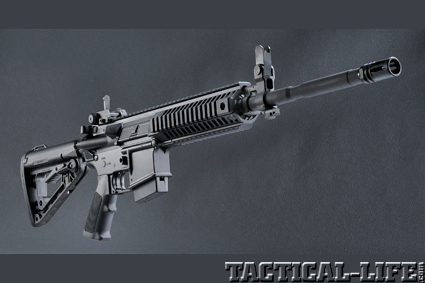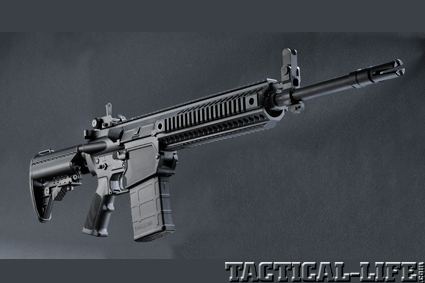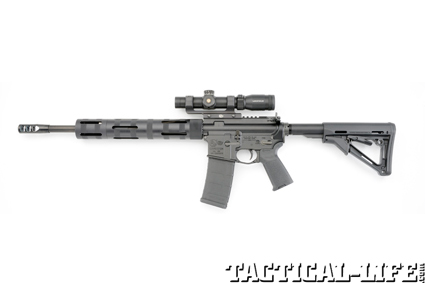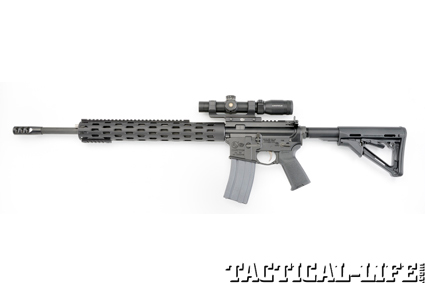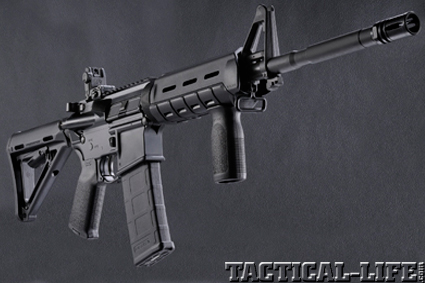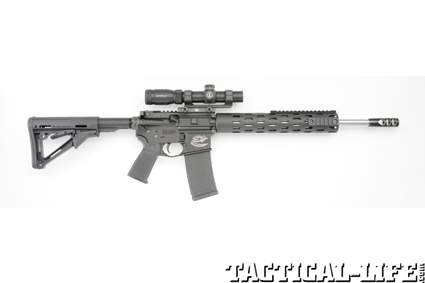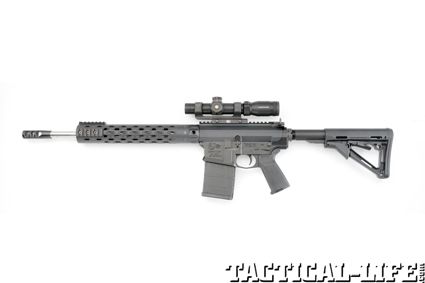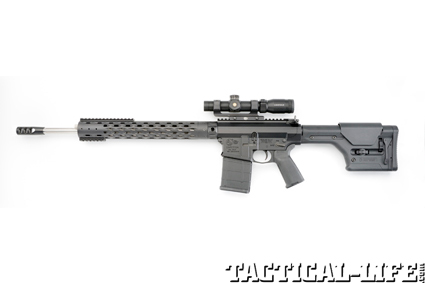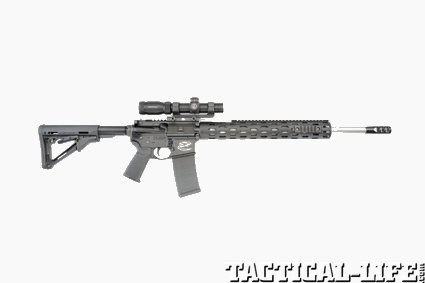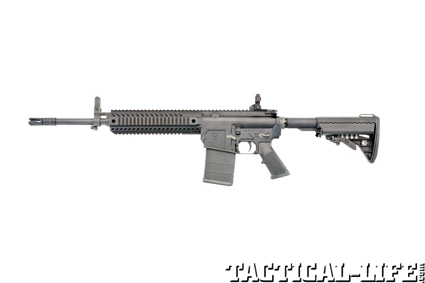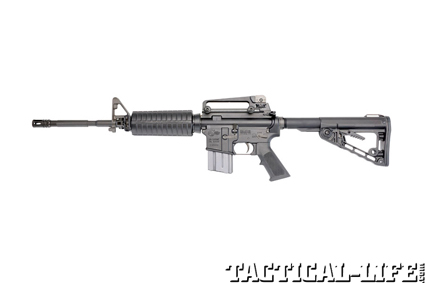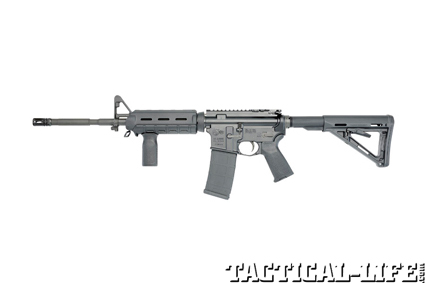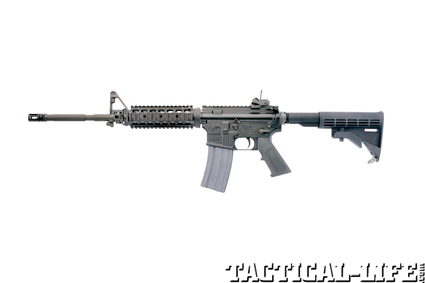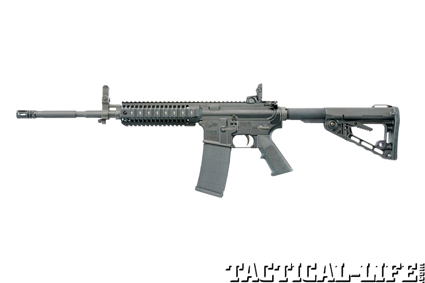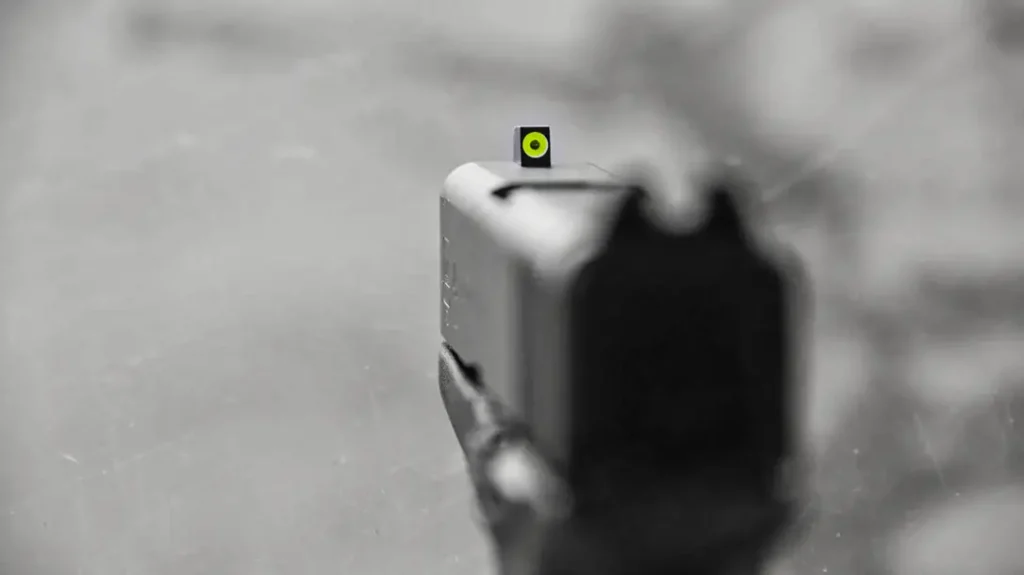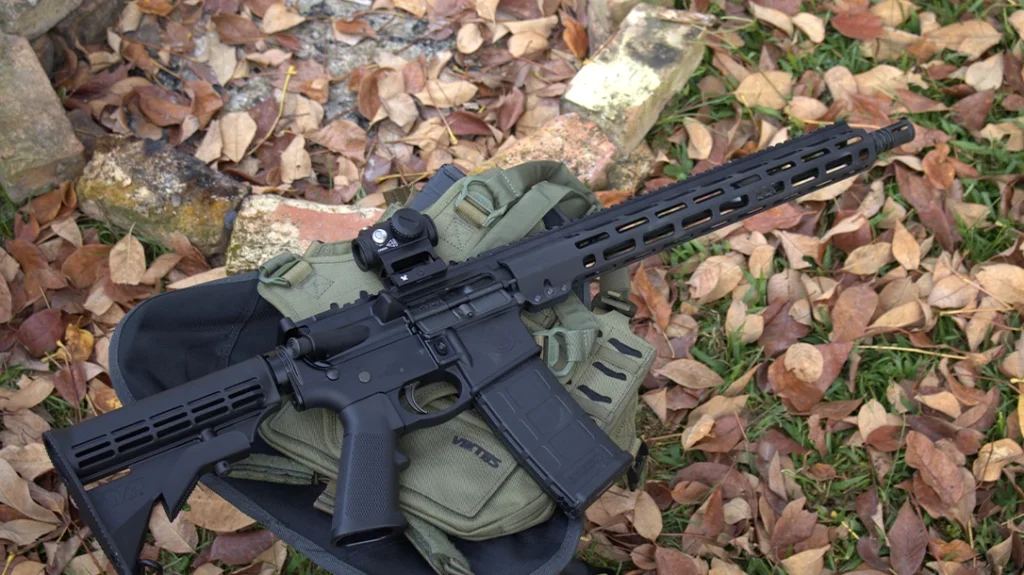It’s hard to believe the AR almost didn’t see the light of day. But Colt’s Manufacturing Company, either by luck or marketing savvy, transformed the AR-15 into one of the most reliable and longest-fielded combat rifles in U.S. military history. Colt has been the U.S. military’s sole manufacturer of the AR since the M16 was first deployed in the Vietnam War in the 1960s. Since then, the M16 has gone through several evolutions, with the M16A4 being the fourth generation of the series. The M4 Carbine, a shortened version of the M16 that employs a 14.5-inch barrel, is probably the most-fielded variant among military and law enforcement personnel. Designed for use in tight quarters, like the confines of a vehicle, the M4 is more maneuverable than the longer M16 variants.
Colt’s commercial rifles for sporting use run the gamut from civilian versions of the M4, to hunting variants in camo finishes, to tricked-out rifles for 3-Gun and match competition. Colt recently upped its game with a modular AR that’s capable of changing calibers, from .308 to .223, through the use of proprietary monolithic uppers.
During a recent tour of Colt’s facility in Hartford, Connecticut, I observed traditional, old-school machining alongside high-tech, cutting-edge robotics. Of course, Colt manufactures a range of firearms, from traditional Single Action Army revolvers and 1911 pistols to advanced AR-15 rifles. The CNC machines bridge the gap between the old tooling used to do specialized machining on Single Action Army revolvers and the fast-moving robotic arms that machine metal chips from aluminum forgings to create monolithic upper receivers.
Advertisement — Continue Reading Below
Colt was there when the U.S. military wrote the mil-spec on AR rifles. Parts go through an extensive testing process to ensure that the rifles on the front lines will perform in any environment they face. Part of the government’s approval process involves arbitrarily choosing a number of weapons, completely stripping them down, mixing up the parts and reassembling the rifles. If they function, the lot is accepted. Colt applies its mil-spec experience and know-how to commercial versions as well, offering civilian-ready AR-15s that can be categorized into three variant types: personal defense, hunting and competition.
Colt Personal Defense
The choice in Colt personal-defense carbines is large, comprising versions similar to mil-spec M4s (like the 16-inch-barreled LE6920SOCOM, which sports an M4-style adjustable stock) and carbines outfitted with aftermarket furniture (like the LE6920MP-FDE, which sports a Magpul MOE buttstock, handguard, vertical front grip and flip-up sights). At the heart of the LE6920 series is the combat-proven Colt M16 and M4, except with a semi-automatic mode of fire. All rifles in the series feature 1-in-7-inch twist rates in chromed, 16.1-inch barrels. These models have non-free-floated barrels that use a slip ring or delta ring to remove the handguards, and adjustable post front-sights. In use, the LE6920MP-FDE, with its Magpul furniture and vertical grip, enabled optimal control during rapid fire. The Magpul pistol grip also fills your hand more than the standard military AR grip.
The Colt AR15A4 offers a retro look in an AR rifle, with an A2-style buttstock and round, grooved handguard. The carry handle removes to reveal a rail for mounting an optic. Shorter and more easily maneuverable (just 30 inches in overall length) is the AR6720LECAR with a 10.6-inch barrel and a welded, pinned, 5.5-inch flash suppressor to bring the barrel to the street-legal length of 16 inches.
Advertisement — Continue Reading Below
A 9mm variant, the Colt AR6951, offers a traditional adjustable post front sight and a flattop with a Magpul Gen2 backup rear sight. The skinny, straight stick magazine is a clue that this AR can share ammo with your 9mm pistol.
Colt Hunters
The LE6940MPHD in ATACS High Desert Camo blends into the scenery when you’re sniping coyotes. It and all LE6940 series rifles feature Colt’s proprietary monolithic upper receiver, which is more rigid, makes the rifle slightly heavier than military-style carbines, and allows the barrel to free-float and thus enhance accuracy. A continuous mil-spec rail runs from the upper’s rear to the front sight, and three other rails form the handguard. LE6940 series rifles have flip-up iron sights, so if mounting a scope is a priority, the sights can be stowed and won’t impede sighting through the optic. Also, the rail is designed for repeatability in removing and attaching optics.
The debate continues as to whether the direct gas system is better than a gas piston system. The LE6940P features an articulating piston system that showed little difference in recoil from the 5.56mm round. What I can do with the piston system that I can’t do with a direct gas system is crack open the receiver and pull out the bolt carrier and bolt immediately after emptying numerous 30-round magazines—piston systems keep the bolt carrier cool and clean. My choice? I’ll take a rifle with each system.
Advertisement — Continue Reading Below
Colt’s AR game-changer is the LE901-16S. This rifle allows different-caliber upper receivers to be swapped out and employs Colt’s monolithic upper in .308, which is topped with folding BUIS. The barrel is free-floated and uses the traditional direct gas system. At 9.4 pounds, the LE901-16S has minimal recoil with heavy .308 loads. The real treat about this rifle is that the .308 upper can be swapped for any mil-spec 5.56mm NATO Colt upper, which makes for a rifle that’s versatile enough for woodchucks, prairie dogs, whitetail deer, elk and black bear. My experience with the LE901-16S includes time with both the .308 and the 5.56mm uppers. Placing the 5.56mm upper on the LE901-16S’ lower receiver requires an insert block to allow 5.56mm magazines to function. I used an assortment of metal mil-spec and polymer Magpul magazines. There were no disruptions in fire, just lots of empty brass at my feet. The heft of the rifle made the 5.56mm’s recoil feel nonexistent. I only had the opportunity to test the rifle with open sights, but that did not seem to be a disadvantage. I tore through paper targets with fist-sized groups. (I was not shooting for precision but for speed.) The rifle also has an ambidextrous magazine release, bolt catch and safety selector.
Colt Competitors
The LE6900 is a stripped-down carbine, meaning that the dustcover and forward assist, which seem superfluous to many of today’s AR shooters, have been removed. (Stripped-down does not in any way mean inferior.) In a recent test of the LE6900 with its free-floated Shaw barrel in a tube-style handguard and flattop upper, I was able to shoot 1-MOA groups with premium 55-grain Black Hills ammunition and value-priced 55-grain American Eagle cartridges. I used a Leupold 1.25-4x20mm VX-R Patrol scope and Leupold’s one-piece Integral Mounting System. This carbine would be well suited for a shooter interested in both 3-Gun competition and varmint hunting.
Tricked-out competition guns include the Colt CRX, CRP, CRB, CRG, CRL and CRE series of rifles, which are all hand-built in the U.S. with all U.S.-made parts. Intended for 3-Gun competition, these firearms come with a 1-MOA accuracy guarantee firing three shots of match-grade ammo at 100 yards. Each model is fitted with a free-floated, match-grade, 16-, 18- or 20-inch barrel made of 416 stainless steel; a two-stage, match Geissele trigger; an original direct impingement system; an extended, tactical latch charging handle; and a two- or three-port Colt muzzle brake, with most rifles using a Magpul adjustable stock. The CRP-16, -18 and -20 models are chambered for 5.56mm NATO and have a .223 Wylde match chamber. The CRP weapons employ a low-profile, finger-adjustable gas block. The CRX-16 and -16E models have a 5.56x45mm NATO (.223 Rem) chamber and a non-adjustable, low-profile gas block. They also have a Colt Competition match trigger with nickel/Teflon-coated parts. The CRE-18 models use a .223 Wylde chamber and have a similar trigger setup as the CRXs’. The CRB-16 and CRG-20 have 16-inch barrel in 300 AAC Blackout and a 20-inch barrel in 6.5mm Grendel respectively. The CRL-16 and -20 are chambered in 7.62mm NATO and both sport a two-stage Geissele trigger and low-profile, finger-adjustable gas block.
Advertisement — Continue Reading Below
For rifles set up for match target competition, there are the MT6400001 and MT6400R001, which have 16-inch barrels with 1-in-7-inch twists. The MT6700 and CR6724001 models feature longer barrels (20 and 24 inches respectively) with 1-in-9-inch twists.
The combat AR bloodline started with Colt, which knows how to make battle-proven rifles of mil-spec quality. And the company continues to push the envelope on evolving the AR rifle design. For more on Colt rifles, visit coltsmfg.com or call 800-962-2658, or visit coltcompetitionrifle.com or call 855-308-2658.
